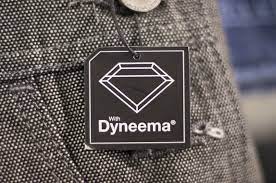A new screw wear resistance technology, a hard coat surfacing technique for mouldings and concepts for improving the production of thick section optical mouldings were among the innovations last week when Engel held this year’s triennial technical symposium in Austria.
The symposium attracted around 2,000 visitors from some 45 countries, but that it was held at all had been a matter for discussion by the Engel management given the pressures on the company by the present collapse in the market for injection moulding machines.
A particular pressure was that the symposium was staged at Engel’s St Valentin plant which builds big machines, substantially for the automotive market, and has been the focus of recent press reports that it would bear the brunt of around 400 job cuts. The actual extent of any redundancies, however, has yet to be revealed. Engel’s chief executive Dr Peter Neumann speaking at the symposium said only that “further adjustment of staff capacity” was “unfortunately necessary and inevitable”.
Like other companies Engel has been juggling with cost-reducing measures such as short-time working, sabbaticals and reduced overtime. It has also been working alongside the Austrian government in a scheme in which staff made redundant can go into a government-supported training programme, creating a pool of skilled labour for when employment demands return.
Dr Neumann emphasised that Engel has the financial resources to restructure itself according to market demands without needing government support, but he was critical of the Austrian process for handling short-time working in which workers still receive 90 per cent of their wage regardless of working hours, while Engel’s German competitors could reduce wages pro rata with the time worked.
The worldwide injection moulding machine market was summed up by Dr Neumann as “from boom to crisis”. He showed how worldwide demand for machines more than doubled over the 15 year period from 1975 to 1990, nearly trebled in the next 17 years to 91,000 machines in 2007, and then more than halved over only two years to the forecast global demand for 2009 of 39,000 machines.
Engel’s sales in 2008/09 give a measure of the rate at which demand has declined. In 2007/08 the company’s turnover was Eur 622 million. In the first six months of 2008/09 turnover rose 25 per cent, but Engel finished the year 5 per cent down at Eur 591 million.
Dr Neumann predicted the main markets for injection moulding machines will all rise again from next year, some faster than others, and some from a deeper low point. Perversely it is a return to growth that is most likely to cause problems in the machine sector. Suppliers of bought-in components are suffering the knock-on effects of the moulding machine slump and extended payment by some machine manufacturers is threatening supplies to all machine builders. While supplies of components may be jeopardised now, paying for components in the future could put a strain on machine manufacturers. Dr Neumann said that ready cash was the biggest problem foreseen by Engel over the next few years as components would have to be paid for ahead of settlement by the customers for the machines. Alongside this would be possible shortage of supply unless components manufacturers, themselves reducing their current capacities, could increase capacity to match the resurgence in moulding machine sales.
With absolute machine sales crashing and unlikely, if at all, to rise again beyond the boom years Engel’s strategy is to focus on market share to achieve growth. In 2008, said Dr Neumann, Engel accounted for 13 per cent of world injection moulding machine sales value, with 27 per cent in Europe, 12 per cent in the USA and 4 per cent in Asia.
To maintain growth in market share, if not yet in turnover, Engel has put in place a series of measures to make machines cheaper and easier to buy and use. Its scrappage scheme introduced in March has found some takers and is scheduled to continue for a few months yet. Engel has also tied in with Deutsche Leasing to offer finance to companies whose banks have restricted their lending.
With the hook of celebrating 20 years of tiebarless moulding on which to hang it, Engel has introduced a “spex” version of its Victory machine which offers lower prices for a reduced set of options.
Its Duo range of two-platen machines has been brought down in size with the introduction last year of the Pico Duo variant starting at 450 tonnes, for which Engel claims 20 – 40 per cent less footprint, a 31 per cent shorter dry cycle and 25 per cent lower energy usage than competitive machines. Alongside this it has extended the use of its Ecodrive package, introduced last year on the e-Victory, as an option on the Duo series from October this year (and from the same date, also on the Victory). This upgrades the hydraulic system to drive the variable displacement pump with a servo motor rather than an asynchronous motor giving increased controllability for better matching of pump output to machine requirements, and on the way decreasing the oil temperature, saving on cooling energy. It is ideally teamed with electric screw drive for additional power savings and when compared with a standard 500 tonne Duo machine Engel reckons to cut energy consumption by around Eur 7,000 a year – when compared with a machine already equipped with electric screw drive there is still a saving of around Eur 5,500.
Alongside the more commercial aspects of the event Engel used the symposium to unveil a few technical novelties including a new wear-resistant screw option, an optimisation module for its e-Factory production and process data acquisition software suite, a polyurethane clear coating process, and new technology for moulding thick section optical parts.
The new Onyx screw is a development of the existing Marathon screw and has a 0·3 mm cemented carbide (tungsten carbide bonded by a cobalt binder) coating which Engel says gives seven times the wear resistance of other comparable screws. Engel says that while standard HVOF (high velocity oxygen fuel) coatings achieve bonding levels of 90 to 110 MPa, the Onyx coating system achieves bonding values of 250 to 350 MPa and in a drop hammer impact test it achieved a 300 per cent higher impact force before initial cracking occurred than with other coating systems.
The e-Factory suite – formerly the Engel Monitoring System (EMS) – is a process monitoring suite making process data available to terminals away from the machine for further monitoring and analysis. It also enables machines to be set by importing data. The new Observer module monitors an array of parameters – plasticising time, screw torque, injection time, injection force, melt cushion, temperatures, clamping force, cycle time and others – and combines them into a green/orange/red colour coded trace to indicate whether the process is acceptably stable, slight unstable, or severely unstable. Engel says it needs no configuration or input of tolerances or reference values, and is self-learning in 10 – 20 shots.
Clearmelt is the new process for applying a hard clear coat in the mould and is a shuttle table operation with two cavities. The component is moulded in the first cavity and cooled, then the table moves to bring the second, slightly larger, cavity into play. A metering unit then injects a two-component polyurethane into the void between the component surface and the second cavity. There is a further cure period and the component is ejected.
The final innovation demonstrated by Engel was of compression-induced solidification in the production of a lens blank. The problem with thick, clear optical mouldings is that as they cool different parts of the moulding go through the state change from liquid to solid at different times, causing unequal shrinkage and variations in density, and consequently damaging the optical properties of the len
s.
Compression-induced solidification relies on the pvT (pressure, volume temperature) characteristics of the material which increase its glass transition temperature as pressure rises. So by compressing the material in the mould its Tg rises and if it can be pushed to a point above the temperature of the material in the mould, the glass transition point is crossed and the material changes from a liquid to a solid state.
Once the liquid material has become a solid it is held under pressure by being locked into a reduced volume and can be cooled down to ambient temperature without a further phase change. And as the moulding is then uniformly solid, cooling has an equal effect throughout the part leading to uniform shrinkage and no residual stresses.
The application of pressure and cooling of the solid moulding to a temperature at which it can be de-moulded take their toll on productivity, however, and Engel was quoting a cycle time of around 15 minutes for the demonstration.
Source: britishplastics.co.uk






